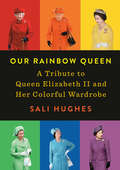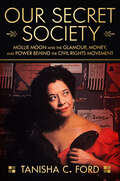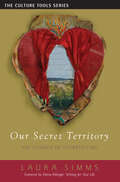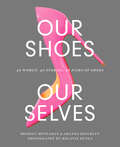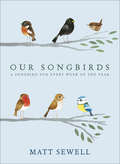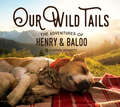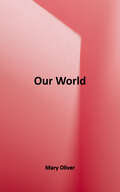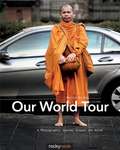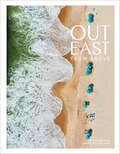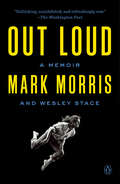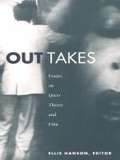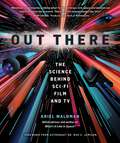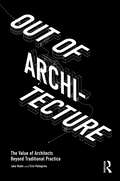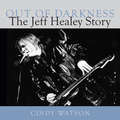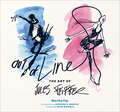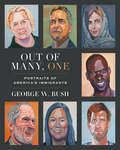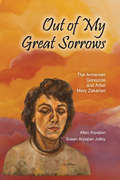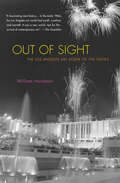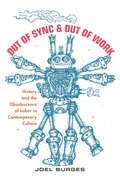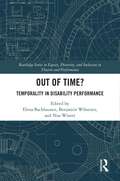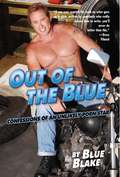- Table View
- List View
Our Rainbow Queen: A Tribute to Queen Elizabeth II and Her Colorful Wardrobe
by Sali HughesA full-spectrum collection of photos of the Queen, paired with illuminating captions explaining each outfit, spanning nine decades of fashion and every color of the rainbow.This riotously colorful book takes a photographic journey through Queen Elizabeth II's ten decades of color-blocked style. The photographs, which span the colors of the rainbow and a century of style, are gloriously accessorized with captions and commentary by journalist and broadcaster Sali Hughes, who gives fascinating context to each photo. Readers will learn how the Queen has used color and fashion in strategic and discreetly political ways, such as wearing the colors of the European flag to a post-Brexit meeting or a pin given to her by the Obamas to a meeting with Donald Trump. With stunning photographs that span from the 1950s to today, and featuring brilliant colors ranging from the dusky pinks the Queen wore in girlhood through to the neon green dress that prompted the hashtag #NeonAt90, this must-have collection celebrates the iconic fashion statements of the UK's longest reigning and most vibrant monarch.
Our Secret Society: Mollie Moon and the Glamour, Money, and Power Behind the Civil Rights Movement
by Tanisha FordAn engrossing social history of the unsinkable Mollie Moon, the stylish founder of the National Urban League Guild and fundraiser extraordinaire who reigned over the glittering "Beaux Arts Ball,” the social event of New York and Harlem society for fifty years—a glamorous event rivalling today’s Met Gala, drawing America’s wealthy and cultured, both Black and white.Our Secret Society brilliantly illuminates a little known yet highly significant aspect of the civil rights movement that has been long overlooked—the powerhouse fundraising effort that supported the movement—the luncheons, galas, cabarets, and traveling exhibitions attended by middle-class and working-class Black families, the Negro press, and titans of industry, including Winthrop Rockefeller.No one knew this world better or ruled over it with more authority than Mollie Moon. With her husband Henry Lee Moon, the longtime publicist for the NAACP, Mollie became half of one of the most influential couples of the period. Vivacious and intellectually curious, Mollie frequently hosted political salons attended by guests ranging from Langston Hughes to Lorraine Hansberry. As the president of the National Urban League Guild, the fundraising arm of the National Urban League; Mollie raised millions to fund grassroots activists battling for economic justice and racial equality. She was a force behind the mutual aid network that connected Black churches, domestic and blue-collar laborers, social clubs, and sororities and fraternities across the country.Historian and cultural critic Tanisha C. Ford brings Mollie into focus as never before, charting her rise from Jim Crow Mississippi to doyenne of Manhattan and Harlem, where she became one of the most influential philanthropists of her time—a woman feared, resented, yet widely respected. She chronicles Mollie’s larger-than-life antics through exhaustive research, never-before-revealed letters, and dozens of interviews.Our Secret Society ushers us into a world with its own rhythm and rules, led by its own Who’s Who of African Americans in politics, sports, business, and entertainment. It is both a searing portrait of a remarkable period in America, spanning from the early 1930s through the late 1960s, and a strategic economic blueprint today’s activists can emulate.Our Secret Society includes 16 pages of never-before-seen photographs.
Our Secret Territory: The Essence of Storytelling (The Culture Tools Series)
by Laura SimmsLaura Simms is an acclaimed storyteller whom The New York Times has called a major force in the revival of storytelling in America. Laura's way of telling a story allows the mind of the listener to rest in a realm of imagination beyond thought, and stimulates its faculties of kindness and relationship. In this book she examines the spiritual and social aspects of storytelling, and its process of engagement.
Our Shoes, Our Selves: 40 Women, 40 Stories, 40 Pairs of Shoes
by Bridget Moynahan Amanda BenchleyForty remarkable women share the stories and memories behind their favorite shoes—accompanied by gorgeous photography.Cinderella wasn’t the only one whose life was changed by a pair of shoes. Ask any woman about her favorite pair and you’re sure to get an answer that goes beyond their material design. In Our Shoes, Our Selves: 40 Women, 40 Stories, 40 Pairs of Shoes, actress Bridget Moynahan and journalist Amanda Benchley ask forty accomplished women to recount the memories behind their most meaningful footwear. This collection features stories from icons like Bobbi Brown, Danica Patrick, and Misty Copeland; intrepid reporters like Christiane Amanpour and Katie Couric; and creative forces like Rupi Kaur, Maya Lin, and Gretchen Rubin. Beautifully illustrated with a portrait of each woman and her chosen shoes, the stories explore what most women already know: that what we wear can have power and significance beyond merely clothing our bodies. Our Shoes, Our Selves reveals these remarkable journeys, and the steps these inspiring women have taken to get there.
Our Songbirds: A songbird for every week of the year
by Matt SewellIn this beautiful follow-up to 2012's hit, Our Garden Birds, street artist Matt Sewell offers more watercolours and quirky descriptions of British songbirds.In Matt's world, the peewit sings the blues, and the bittern fills his neck 'like a tweed pair of bellows'. Distinctive and enchanting, with a songbird for each week of the year, this delightful gift book will appeal to birders, children and adults, and art and design fans alike.
Our Wild Tails: The Adventures of Henry & Baloo
by Cynthia BennettTravel and pet photography come together in this coffee table book about an unusually close dog and cat pair on hiking adventures with their pet parents.Henry and Baloo are a real-life dog/cat sibling pair, based in Colorado, whose unconventional friendship has won the hearts of humans worldwide. Whether they’re scaling mountains or cozying down in a tent, these two are never far from each other’s side and always ready for their next trek. Wanting to share their explorations with friends and family, photographer and the pair’s proud owner, Cynthia Bennett, began capturing Henry and Baloo on their outdoor adventures?with vivid colors and stunning backdrops surrounding them in every shot.Now never-before-seen photos and untold stories are compiled in a book for fans to enjoy. More than beautiful photography and a sweet story, Our Wild Tails champions friendship in the most unlikely of places and proves to readers that love is universal.Winner of the Reading The West Book Award for illustrated nonfiction
Our World
by Mary OliverMary Oliver, winner of the Pulitzer Prize and National Book Award, is one of the most celebrated poets in America. Her partner Molly Malone Cook, who died in 2005, was a photographer and pioneer gallery owner. Intertwining Oliver's prose with Cook's photographs, Our World is an intimate testament to their life together. The poet's moving text captures not only the unique qualities of her partner's work, but the very texture of their shared world.
Our World Tour
by Mario DirksDesigned to inspire world travelers and photographers alike, this book takes you on a journey around the globe through the eyes of photographer Mario Dirks. In the fall of 2011, camera and lens manufacturer Sigma sent Mario on a yearlong adventure to photograph the most beautiful places on earth. As Sigma's World Scout, he spent 50 weeks visiting a total of 77 cities, 48 countries, and 6 continents. He took 101 flights and traveled 2,500 miles on foot. The result of his tour is a collection of 347 extraordinary photographs showcasing fascinating destinations and scenic locations from around the world. With this wealth of images and experiences, Mario Dirks has created a diversified snapshot of our earth. The images in this book show global sights like the Taj Mahal, Machu Picchu, Petra, the Grand Canyon, and Ayers Rock, as well as architectural masterpieces, unique natural landscapes, and portraits of people and animals. Mario's photographs are accompanied by anecdotes from his travels, making this book a visual delicacy not only for traveling photographers, but for anyone interested in viewing captivating images from around the world. Come with the author on a journey to the Americas, Africa, Europe, Asia, and Australia; immerse yourself in the colorful and exciting variety of our world; and experience what great travel photography is made of.
Our World: Our OFFICIAL autobiography
by Little MixCelebrate Little Mix's first UK number-one album - Glory Days - by reading the full story of the girls' astonishing rise to pop super stardom. Our World is full of exclusive photos and inspirational stories about Jade, Perrie, Jesy and Leigh-Anne's unique friendship.Little Mix are the UK's most successful girl band. They first found fame - and each other - on The X Factor in 2011. Five years later they have gone from strength to strength, achieving huge global success. With three platinum-selling albums in the UK and over 14 million record sales worldwide, the band are both adored by their fans and critically acclaimed for their brilliant music. In this book the girls share the real behind-the-scenes story of both their personal lives and their success. They reveal the many highs - what it feels like to perform in front of thousands of people; the excitement of seeing your music soar to Number One around the world - but also the lows. Through it all the girls have had each other, and their incredibly close friendship has grown stronger and stronger as the years have gone by. Now the girls are like sisters, and in this book they share their journeys and how it feels for your dreams to come true.Brimming with exclusive photos, this book shares with us the girls' innermost secrets - their hopes and dreams for the future, their families, their relationships, their style advice and above all their friendship. This book is Little Mix's story in their own words and tells you everything you need to know about their lives both in and out of the spotlight.
Out East from Above
by Lainey Stewart Kaeley MichaelsonGenerations of vacationers have headed "Out East" to the South Fork of Long Island, which is renowned for its storied past, beloved beaches, and trendy restaurants and shops. Stitched together by personal anecdotes and local history, this well-curated visual tour of the South Fork provides a unique window into the heart and soul of Montauk and the surrounding areas. Features include: • Vibrant drone photography that provides aerial views of beaches, restaurants, accommodations, and attractions, allowing readers to view the best of Montauk and the surrounding areas in a new way; • Insider recs from sisters and longtime South Fork evangelists Kaeley Michaelson and Lainey Stewart; and • Ultracool design, high-end treatments, and summertime vibes that make this coffee-table book ideal for gifting and displaying. This visual love letter will allow South Fork veterans and newbies alike to experience a trip "Out East" like never before!
Out Loud: A Memoir
by Mark Morris Wesley StaceFrom the most brilliant and audacious choreographer of our time, the exuberant tale of a young dancer’s rise to the pinnacle of the performing arts world, and the triumphs and perils of creating work on his own terms—and staying true to himself Before Mark Morris became “the most successful and influential choreographer alive” (The New York Times), he was a six year-old in Seattle cramming his feet into Tupperware glasses so that he could practice walking on pointe. Often the only boy in the dance studio, he was called a sissy, a term he wore like a badge of honor. He was unlike anyone else, deeply gifted and spirited. Moving to New York at nineteen, he arrived to one of the great booms of dance in America. Audiences in 1976 had the luxury of Merce Cunningham’s finest experiments with time and space, of Twyla Tharp’s virtuosity, and Lucinda Childs's genius. Morris was flat broke but found a group of likeminded artists that danced together, travelled together, slept together. No one wanted to break the spell or miss a thing, because “if you missed anything, you missed everything.” This collective, led by Morris’s fiercely original vision, became the famed Mark Morris Dance Group. Suddenly, Morris was making a fast ascent. Celebrated by The New Yorker’s critic as one of the great young talents, an androgynous beauty in the vein of Michelangelo’s David, he and his company had arrived. Collaborations with the likes of Mikhail Baryshnikov, Yo-Yo Ma, Lou Harrison, and Howard Hodgkin followed. And so did controversy: from the circus of his tenure at La Monnaie in Belgium to his work on the biggest flop in Broadway history. But through the Reagan-Bush era, the worst of the AIDS epidemic, through rehearsal squabbles and backstage intrigues, Morris emerged as one of the great visionaries of modern dance, a force of nature with a dedication to beauty and a love of the body, an artist as joyful as he is provocative. Out Loud is the bighearted and outspoken story of a man as formidable on the page as he is on the boards. With unusual candor and disarming wit, Morris’s memoir captures the life of a performer who broke the mold, a brilliant maverick who found his home in the collective and liberating world of music and dance.
Out Takes: Essays on Queer Theory and Film
by Ellis HansonThis collection brings together the work of both film scholars and queer theorists to advance a more sophisticated notion of queer film criticism. While the "politics of representation" has been the focus of much previous gay and lesbian film criticism, the contributors to Out Takes employ the approaches of queer theory to move beyond conventional readings and to reexamine aspects of the cinematic gaze in relation to queer desire and spectatorship.The essays examine a wide array of films, including Calamity Jane, Rear Window, The Hunger, Heavenly Creatures, and Bound , and discuss such figures as Doris Day, Elizabeth Taylor, and Alfred Hitchcock. Divided into three sections, the first part reconsiders the construction of masculinity and male homoerotic desire--especially with respect to the role of women--in classic cinema of the 1940s and 1950s. The second section offers a deconstructive consideration of lesbian film spectatorship and lesbian representation. Part three looks at the historical trajectory of independent queer cinema, including works by H.D., Kenneth Anger, and Derek Jarman.By exploring new approaches to the study of sexuality in film, Out Takes will be useful to scholars in gay and lesbian studies, queer theory, and cinema studies.Contributors. Bonnie Burns, Steven Cohan, Alexander Doty, Lee Edelman, Michelle Elleray, Jim Ellis, Ellis Hanson, D. A. Miller, Eric Savoy, Matthew Tinkcom, Amy Villarejo, Jean Walton
Out There: The Science Behind Sci-Fi Film and TV
by Ariel WaldmanExplore the science behind some of your favorite popular science fiction tropes--from escaping a black hole to riding a space elevator to the stars—in this illustrated guide from NASA advisor and host of the popular Tested podcast Offworld. Whether it's researching new technology, theories, or possible extraterrestrial situations, the showrunners and directors of our favorite science fiction shows and films are often extending the boundaries of real science, leaving viewers and fans to wonder, "Could this really happen?" In Out There: The Science Behind Sci-Fi Film and TV, author and filmmaker Ariel Waldman dives into the fascinating real science behind some of the most beloved space-themed science fiction tropes, from faster-than-light travel to AI ships, hypersleep, and imagining life on other planets. Each chapter dives into a particular situations or scientific questions that frequently show up in science fiction pop culture. Aided by interviews with a diverse range of scientists, educators, authors, and journalists, Out There takes science fiction fans, movie geeks, and popular science lovers on a journey to the farthest depths of space, revealing how thin the gap between fiction and reality can be.
Out of Architecture: The Value of Architects Beyond Traditional Practice
by Jake Rudin Erin PellegrinoOut of Architecture is both a call to reassess the architecture profession and its education, and a toolkit for graduates and working architects to untangle their skills, passions, and value from traditional architectural practice and consider alternate pathways. Written by design professionals and expert career consultants, this book is informed by numerous client accounts as well as the authors’ own stories and routes out of architecture. The initial chapters follow the narrative of a typical architecture training in the US, highlighting the many highs and lows, skills honed, and ultimately the huge disconnect that can occur between architectural education and practice. Subsequent chapters explore a disillusionment with the profession, unhealthy work cultures, mentorship, working with lead architects, toxic perfectionism, and the notion of a “calling.” Authors then present the hopeful accounts of many architects who escaped a profession known for its grueling working conditions to find fulfilling, well-paying, creative jobs that better utilize the skills of architecture than the architectural profession itself. Written in a unique combination of storytelling and analysis, this patchwork of client and author stories makes for an immersive, provocative, and enjoyable read. A wide range of architecture students, graduates, educators, and professionals will recognize themselves within the pages of this book and find prompts to reassess their working practices, teaching styles, and the profession itself. It will be of particular value to those students skeptical of joining the architecture workforce, as well as those further along and considering a career change.
Out of Bounds: Exploring the Limits of Medieval Art (Signa: Papers of the Index of Medieval Art at Princeton University)
by Pamela A. Patton and Maria Alessia RossiWhere are the limits of medieval art as a field of study? What happens when conventionally trained art historians disregard the chronological, geographical, or cultural parameters that both direct and protect their scholarship? Beginning with Thelma K. Thomas and Alicia Walker’s acute assessment of the need for a “medieval art history for now,” the essays in Out of Bounds ask what happens when the study of medieval art disregards boundaries that it once obeyed. The volume focuses on questions surrounding the production of knowledge and on how scholarly investigation beyond the conventional thematic boundaries of medieval art history is changing, demonstrating how the field can address the ethics of scholarship today by positing a global turn in response to growing demands for socially responsible medieval studies. Collectively, the contributors demonstrate how “going out of bounds” can transform modern understanding of the people, traditions, and relationships that gave rise to medieval works. As such, this book argues for the necessity of reshaping scholarly discourse about the nature and significance of medieval art and generates fresh scholarly interpretations and important new critical tools for teaching and researching the Middle Ages.The contributors to this volume are Suzanne Conklin Akbari, Michele Bacci, Jill Caskey, Eva Frojmovic, Sarah M. Guérin, Christina Maranci, Alice Isabella Sullivan, Thelma K. Thomas, Michele Tomasi, and Alicia Walker.
Out of Breath: Vulnerability of Air in Contemporary Art (Forerunners: Ideas First)
by Caterina AlbanoExplores the intrinsic relation of life to air, and breathing, through contemporary art In Out of Breath, Caterina Albano examines the cultural significance of breath and air to a wide array of forces in our midst, including economy, politics, infection, and ecological violence. Through a consideration of recent art practices and projects, including the dance project Breath Catalogue, which makes visible the breathing patterns of dancers, and Forensic Architecture&’s Cloud Studies video, which investigates eight different kinds of clouds from airstrikes to herbicides to tear gas, Albano focuses on breath as both an intuitive process and a conveyer of meanings.Conceived in response to the Covid-19 pandemic and systemic inequalities that it has laid bare, Out of Breath shows the potential of artistic practices to mobilize affect as a form of cultural and political critique. Forerunners is a thought-in-process series of breakthrough digital works. Written between fresh ideas and finished books, Forerunners draws on scholarly work initiated in notable blogs, social media, conference plenaries, journal articles, and the synergy of academic exchange. This is gray literature publishing: where intense thinking, change, and speculation take place in scholarship.
Out of Darkness: The Jeff Healey Story
by Cindy Watson<P>Short-listed for the 2011 Golden Oak Award <P>From the moment three-year-old Jeff Healey first laid a guitar across his lap in what was to become his signature style, it was clear he was no ordinary kid. <P>Losing both eyes to retinoblastoma, a rare form of cancer, opened a door to another world for Jeff, a newly adopted infant. <P>Out of darkness he created music, becoming one of the most influential blues-rock and jazz performers of our time, beginning with his first hit album, See the Light. <P> In this up-close and personal account, loaded with never-before-seen photographs, memorabilia, and intimate recollections of family, friends, and fellow musicians, we discover this unique music icon’s dynamic career, which saw him collaborate with everyone from George Harrison and Eric Clapton to B.B. King and Stevie Ray Vaughan. <P>From Jeff’s lonely start one snowy night at St. Joseph’s Hospital in Toronto to his untimely end in the same building, we come away with a potent message of empowerment and a renewed sense of hope.
Out of Line: The Art of Jules Feiffer
by Martha FayThe essential retrospective of the Pulitzer Prize-winning cartoonist and writer whose signature brand of satire inspired generations.Everyone knows a Jules Feiffer illustration when they see one. His characters leap across the page, each line resonating with humor and psychological insight. Over Feiffer’s prolific seventy-year career, his nimble and singular imagination has given us new perspectives as well as biting satires on politics, love, marriage, and religion—all imbued with the playful anarchy of a child. Feiffer’s varied output includes children’s books (The Phantom Tollbooth and Bark, George), plays (Little Murders), movies (Carnal Knowledge and Popeye), and comic strips (most notably in his Pulitzer Prize–winning Village Voice comic strip of forty-two years). Out of Line: The Art of Jules Feiffer covers the entirety of Feiffer’s celebrated career, providing a revealing glimpse into his creative process and his role as America’s foremost Renaissance man of the arts.
Out of Many, One: Portraits of America's Immigrants
by George W. BushIn this powerful new collection of oil paintings and stories, President George W. Bush spotlights the inspiring journeys of America’s immigrants and the contributions they make to the life and prosperity of our nation. <P><P>The issue of immigration stirs intense emotions today, as it has throughout much of American history. But what gets lost in the debates about policy are the stories of immigrants themselves, the people who are drawn to America by its promise of economic opportunity and political and religious freedom—and who strengthen our nation in countless ways. <P><P>In the tradition of Portraits of Courage, President Bush’s #1 New York Times bestseller, Out of Many, One brings together forty-three full-color portraits of men and women who have immigrated to the United States, alongside stirring stories of the unique ways all of them are pursuing the American Dream. <P><P>Featuring men and women from thirty-five countries and nearly every region of the world, Out of Many, One shows how hard work, strong values, dreams, and determination know no borders or boundaries and how immigrants embody values that are often viewed as distinctly American: optimism and gratitude, a willingness to strive and to risk, a deep sense of patriotism, and a spirit of self-reliance that runs deep in our immigrant heritage. In these pages, we meet a North Korean refugee fighting for human rights, a Dallas-based CEO who crossed the Rio Grande from Mexico at age seventeen, and a NASA engineer who as a girl in Nigeria dreamed of coming to America, along with notable figures from business, the military, sports, and entertainment. <P><P>President Bush captures their faces and stories in striking detail, bringing depth to our understanding of who immigrants are, the challenges they face on their paths to citizenship, and the lessons they can teach us about our country’s character. As the stories unfold in this vibrant book, readers will gain a better appreciation for the humanity behind one of our most pressing policy issues and the countless ways in which America, through its tradition of welcoming newcomers, has been strengthened by those who have come here in search of a better life. <P><P><b>A New York Times Best Seller</b>
Out of My Great Sorrows: The Armenian Genocide and Artist Mary Zakarian (Armenian Studies)
by Allan Arpajian Susan Arpajian JolleyOut of My Great Sorrows is the story of Philadelphia artist Mary Zakarian, whose life and work were shaped by the experiences of her mother, a survivor of the 1915 Armenian Genocide. Written by Mary Zakarian's niece and nephew, the narrative examines the complexities of the artist's life as they relate to many issues, including ethnicity, gender, immigration, and assimilation. Above all this is a story of trauma - its effects on the survivor, its transmission through the generations, and its role in the artistic experience. Zakarian painted obsessively throughout her life. As she gained recognition for her artwork, she became increasingly haunted by her mother's untold story and was driven to express the tragedy of the Armenian Genocide in her art. Zakarian's attempt to deal openly with the issues of trauma and guilt caused conflicts in her relationship with her mother. These emotions became a driving force behind her art as well as the basis for her personal difficulties. By examining Mary Zakarian's life and art, the authors bring new insights to the study of the Armenian experience. This moving story will inspire all those who have struggled to express themselves in the face of injustice and oppression.
Out of Sight
by William HackmanHistories of modern art are typically centered in Paris and New York. Los Angeles is relegated to its role as the center of popular culture-- a city of movie stars, tan lines, and surfers--but lacking the highbrow credentials of the chosen places. Until 1965, there was no art museum, few notable collectors, and--especially in terms of modern and contemporary work--even fewer galleries. Yet in the 1950s and 1960s, L.A. witnessed a burst of artistic energy and invention rivaling New York's burgeoning art scene a half-century earlier. As New York Times art critic Roberta Smith has noted, it was "a euphoric moment," at a "time when East and West coasts seemed evenly matched." Out of Sight chronicles the rapid-fire rise, fall, and rebirth of the L.A. art scene--from the emergence of a small bohemian community in the 1950s to the founding of the Museum of Contemporary Art in 1980-- and explains how artists such as Ed Ruscha, Robert Irwin, and Ken Price reshaped contemporary art. William Hackman also explores the ways in which the L.A. art scene reflected the hopes and fears of postwar America--both the self-confidence of an increasingly affluent middle class, and the anxiety produced by violent upheavals at home and abroad. Perhaps most of all, he pays tribute to the city that gave birth to a fascinating and until now overlooked moment in modern art.
Out of Sync & Out of Work: History and the Obsolescence of Labor in Contemporary Culture
by Joel BurgesOut of Sync & Out of Work explores the representation of obsolescence, particularly of labor, in film and literature during a historical moment in which automation has intensified in capitalist economies. Joel Burges analyzes texts such as The Invention of Hugo Cabret, Wreck-It Ralph, Fantastic Mr. Fox, and Iron Council, and examines their “means” of production. Those means include a range of subjects and narrative techniques, including the “residual means” of including classic film stills in a text, the “obstinate means” of depicting machine breaking, the “dated means” of employing the largely defunct technique of stop-motion animation, and the “obsolete” means of celebrating a labor strike. In every case, the novels and films that Burges scrutinizes call on these means to activate the reader’s/viewer’s awareness of historical time. Out of Sync & Out of Work advances its readers’ grasp of the complexities of historical time in contemporary culture, moving the study of temporality forward in film and media studies, literary studies, critical theory, and cultural critique.
Out of Time: Desire in Atemporal Cinema
by Todd McGowanIn Out of Time, Todd McGowan takes as his starting point the emergence of a temporal aesthetic in cinema that arose in response to the digital era. Linking developments in cinema to current debates within philosophy, McGowan claims that films that change the viewer&’s relation to time constitute a new cinematic mode: atemporal cinema. In atemporal cinema, formal distortions of time introduce spectators to an alternative way of experiencing existence in time—or, more exactly, a way of experiencing existence out of time. McGowan draws on contemporary psychoanalysis, particularly Jacques Lacan, to argue that atemporal cinema unfolds according to the logic of the psychoanalytic notion of the drive rather than that of desire, which has conventionally been the guiding concept of psychoanalytic film studies. Despite their thematic diversity, these films distort chronological time with a shared motivation: to reveal the logic of repetition. Like psychoanalysis, McGowan contends, the atemporal mode locates enjoyment in the embrace of repetition rather than in the search for the new and different.
Out of Time?: Temporality In Disability Performance (Routledge Series in Equity, Diversity, and Inclusion in Theatre and Performance)
by Elena BackhausenOut of Time? has many different meanings, amongst them outmoded, out of step, under time pressure, no time left, or simply delayed. In the disability context, it may also refer to resistant attitudes of living in “crip time” that contradict time as a linear process with a more or less predictable future. According to Alison Kafer, “crip time bends the clock to meet disabled bodies and minds.” What does this mean in the disability arts? What new concepts of accessibility, crip futures, and crip resistance can be staged or created by disability performance? And how does the notion of “out of time” connect crip time with pandemic time in disability performance? The collective volume seeks to respond to these questions by exploring crip time in disability performance as both a concept and a phenomenon. The book tackles the topic from two angles: on the one hand from a theoretical point of view that connects performance analysis with crip and performance theory, on the other hand from a practice-based perspective of disability artists who develop new concepts and dramaturgies of crip time based on their own lived experiences and observations in the field of the performing and disability arts. The book gathers different types of text genres, forms, and styles that mirror the diversity of their authors. Besides theoretical and academic chapters on disability performance, the book also includes essays, poems, dramatic texts, and choreographic concepts that ref lect upon the alternative knowledge in the disability arts.
Out of the Blue: Confessions of an Unlikely Porn Star
by Blue BlakeOut of the Blue is a hilarious autobiographical romp that details the life of porn star turned director/producer Blue Blake and his adventures in the skin trade. Blue has worked with every major star in the industry and won many major awards and honors, including induction into the Gay Porn Legend Hall of Fame.
